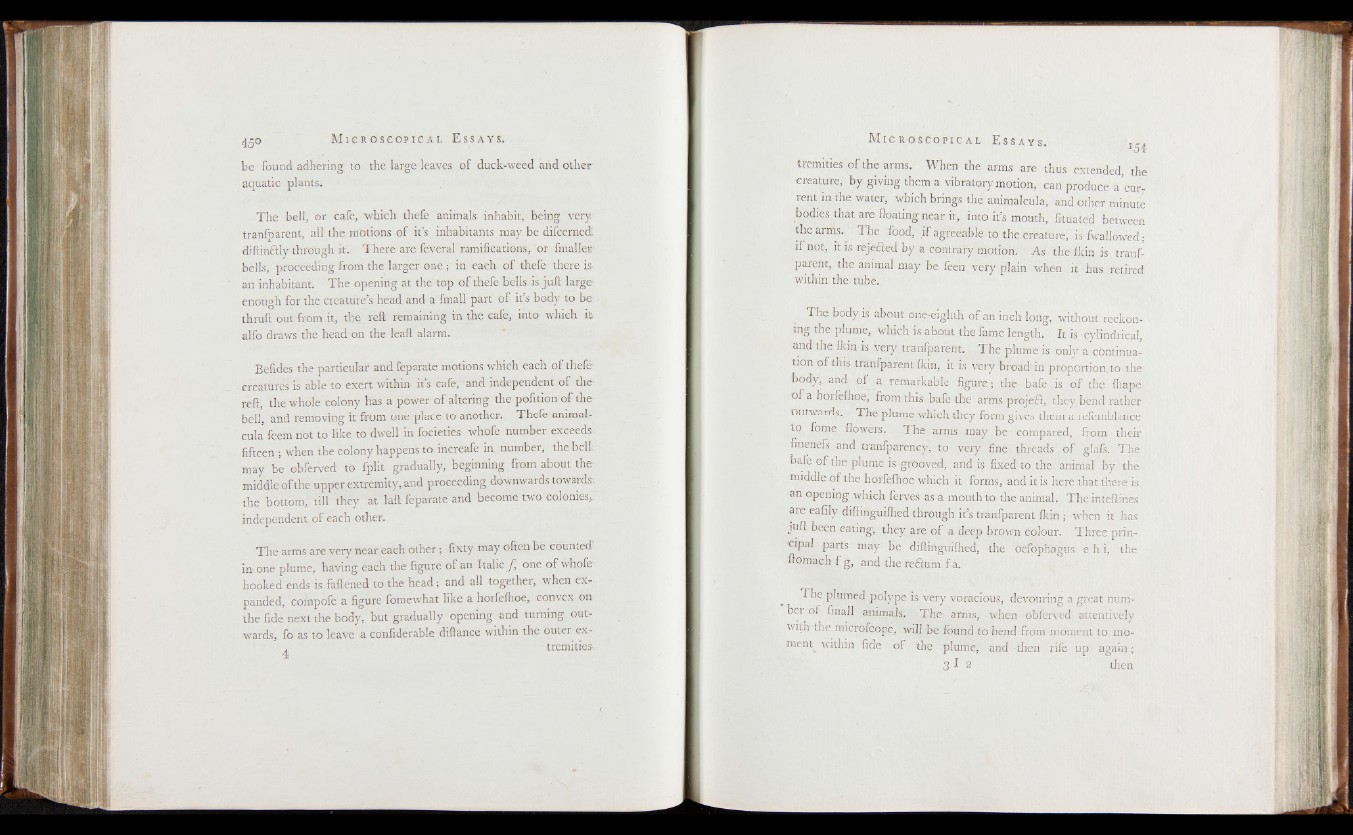
be found adhering to the large leaves of duck-weed and other
aquatic plants.
The bell, or cafe, which thefe animals inhabit, being very,
tranfparent, all the motions of it’s inhabitants may be difcerned.
diftinQly through it. There are feveral ramifications, or fmalleK
bells, proceeding from the larger one ; in each o f thefe there is.
an inhabitant. The opening at the top o f thefe bells is juft large-
enough for the creature’s head and a fmall part of it’s body to be
thruft out from it, the reft remaining in the cafe, into which it
alfo draws the head on the leaft alarm.
Befides the particular and feparate motions which each of thefe-
creatures is able to exert within its cafe, and independent of the
reft, the whole colony has a power o f altering the pofition o f the
bell, and removing it from one place to another. Thefe animal-
cula feem not to like to dwell in focieties whofe number exceeds
fifteen ; when the colony happens to increafe in number., the belt
may be obferved to fplit gradually, beginning from about the-
middle of the upper extremity, and proceeding downwards towards;
the bottom, till they at laft feparate and become two colonies,;
independent of each other.
The arms are very near each other; fixty may often be counted;
in one plume, having each the figure of an Italic f , one o f whofe-
hooked ends is fattened to the head; and all together, when expanded,
compofe a figure fomewhat like a horfelhoe, convex on
the fide next the body, but gradually opening and turning outwards,
fo as to leave a confiderable diftance within the outer ex-
3 54
tremities o f the arms. When the arms are thus extended, the
creature, by giving them a vibratory motion, can produce a curr
rent in the water, which brings the animalcula, and other minute
bodies that are floating near it, into it’s mouth, fituated between
the arms. The food, ,if agreeable to the creature, is fwallowed;
i f not, it is rejected by a contrary motion. As the fkin is tranfparent,
the animal may be feen very plain when it has retired
within the tube.
The body is about one-eighth of an inch long, without reckoning
the plume, which is about the fame length. It is cylindrical,
and the fkin is very tranfparent. The plume is only a continuation
of this tranfparent fkin, it is very broad in proportion,to the
body, and o f a remarkable figure; the b.afe is o f the fliape
•of a horfefhoe, from this bafe the arms projeft, they bend rather
outwards. The plume which they form gives them a refemblance
to fome flowers. The arms may be compared, from their
finenefs and tranfparency, to very fine threads o f glafs. The
bafe o f the plume is grooved, and is fixed to the animal by the
middle o f the horfelhoe which it forms, and it is here that there is
•an opening which ferves as a mouth to the animal. The inteftines
■ are eafily diftinguifhed through it’s tranfparent fkin ; when it has
juft been eating, they are o f a deep brown colour. Three principal
parts may be diftinguifhed, the oefophagus e h i, the
ftomach f g, and the reftum fa.
The plumed polype is very voracious, devouring a great number
of fmall animals. The arms, when obferved attentively •
with the microfeope, will be found to bend from moment to moment^
within fide of the plume, and -then rife up again;
3 I 2 then